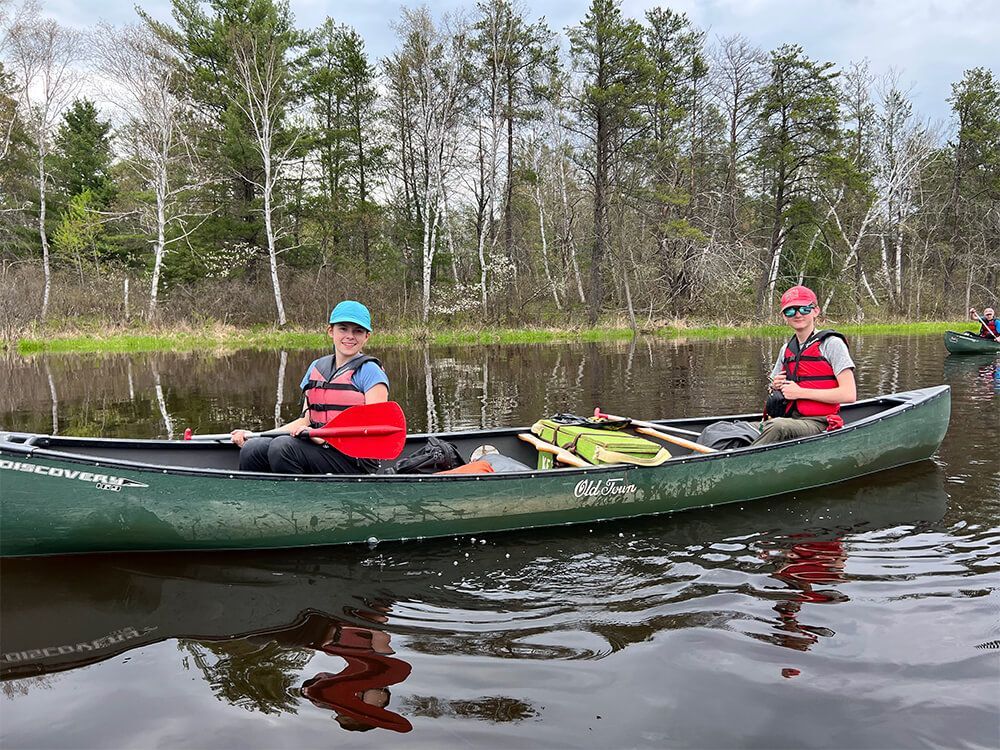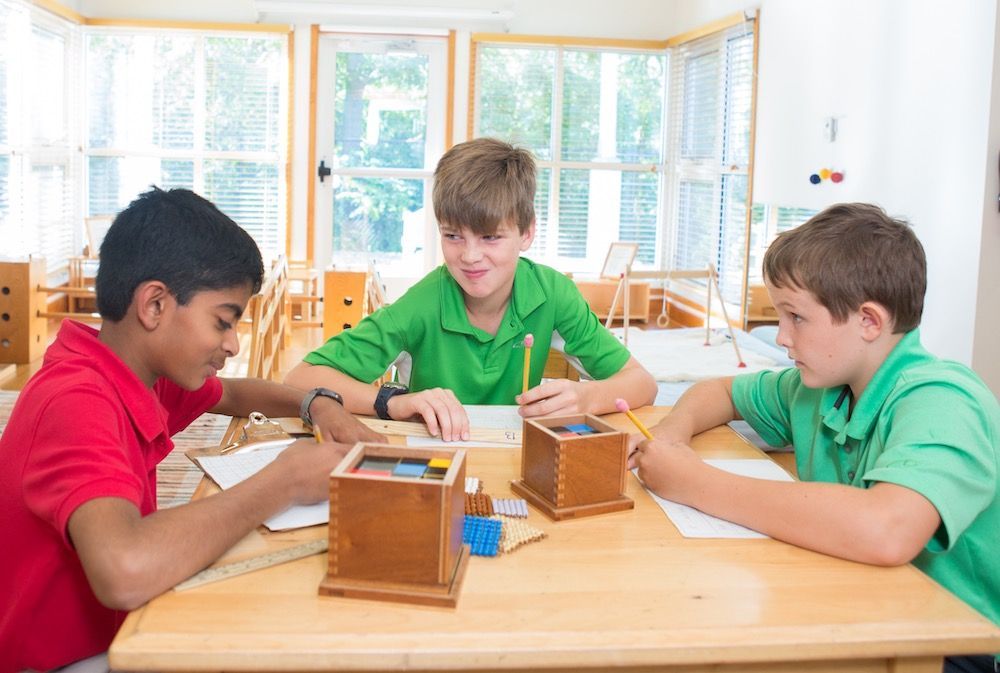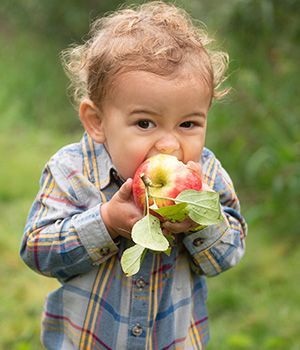
Autumn is here! And with it, cooler winds, colorful leaves, and flourishing apple orchards. There are many activities for you to do with your young child all based around the beautiful apple. You may enjoy a trip to the apple orchard, as well as a Practical Life activity with the fruit in your own kitchen. Here are some ideas for you to try with your children this fall.
An Apple Orchard Excursion
Is there anywhere that feels more like early fall than an apple orchard? The sweet smell of fruit against the dry grass, the sun shining through the leaves, the feel of the apple as you pluck it from the branch. It is a wonderful place to take a small child. However, before you head out to the orchard, there are a few helpful steps to consider. First of all, do your best to find a true functioning apple orchard, and not a “fake farm.” How can you tell the difference? An apple orchard will have apple trees and possibly baskets to hold the fruit. A fake farm will have about a hundred other activities, including clowns, donuts, trains, mazes, and many other elements unnecessary to the production of apples. There is a time and a place for this kind of fun, but it is not an ideal outing for a small child. An apple orchard on its own is treasure enough for your toddler. (For families in Northern Illinois, Heinz Orchard in Green Oaks is a good example of an authentic, no-frills apple orchard.)
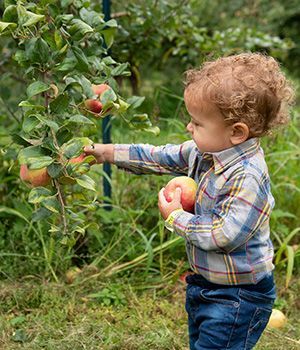
Secondly, once you have found this orchard, before you have even put your child in the car seat, take a deep breath. Lower your expectations. Now lower them again. You will probably have an idea in your mind about how this activity is going to go. You may be imagining your child laughing happily down the rows of apples and helpfully picking fruit and placing it in the basket. Remember that your child has no idea that this is how apple picking is supposed to go. Moreover, he does not care. If you get to the orchard and he is crying and uncooperative and having a tantrum, it probably means he is tired and you should just get back in the car with your three apples and go home. Letting go of expectations is a part of parenthood.
When you reach the apple orchard, assuming all is going well, you can let your child explore the trees at his own pace. If he wants to stay at one tree and pick every single apple within reach, then let him do that. If he wants to move along the row and pick one apple from every tree and this feels achingly inefficient to you, take another deep breath, and let him do that. Remember that this apple picking expedition is not actually about picking as many apples as you can. When you are with a small child, it is about his sensorial experience--the smells, sounds, sights, and feel of the orchard. It is also about his Practical Life activity here--the process of putting apples in buckets, the movements required to walk between trees, and plucking apples from the branches.

The apple orchard will also be a wonderful opportunity for language. You can talk about “blossom,” “branch”, “stem”, “trunk”, “ladder”, “worm”, and so on. He will connect the words to the sensory rich experience and store them in his absorbent mind.
Your trip to the apple orchard will probably end when your young child runs out of steam. As mentioned before, this may occur one minute after you arrive. It may occur fifteen minutes after you arrive. If he lasts longer than that, consider this excursion a rousing success. It is also important to be prepared for an unpleasant exit from the orchard. Even if the trip has gone very well, he may run out of energy just as you are leaving, and there will be tears. Speak to him gently and matter-of-factly about the trip home, and what you will be doing when he gets home. Please do not let this sadness take away from what may have been a very lovely outing for your family. This is simply what life with little children is like!
Making Applesauce at Home
Without a doubt, this second apple activity will not take place on the same day as the trip to the apple orchard. Unless perhaps your child takes a tremendous nap and wakes up with a great deal of positive energy and focus. So often, it is our own ideas about activities that dictate our schedule, rather than our children’s capabilities. They are usually up for one big activity a day, if that. Similarly, you should give yourself permission to pause this activity at any point in the process. If he is not interested in doing the work, then today is not his day. He may want to do one or two steps and then walk away, and that is fine. You can always come back to it another time or another day. Or you may simply finish the activity yourself. This work is for his development and not the productivity of the household.
So, once you have briefly assessed that your child is probably up for a slightly prolonged Practical Life activity, you can invite him to join you in the kitchen. The first step is always to wash hands and put on an apron, to indicate to him that he is ready to work.
Wash the apples. Set up your child at a table that is fitted to him. To the left, place a basket with a few apples. In front of him, put a low bowl or bin filled with an inch or two of water. To the right, put an empty bowl or basket for the clean apples. This left to right model is indirect preparation for reading. Model for him how you choose an apple and put it in the water. Then use a very soft scrub brush to gently clean all sides of the apple. Put the apple in the empty basket to the right. Give him a turn to do the work as he chooses. This may mean vigorously scrubbing one square inch of the apple, and this may mean cleaning every apple in the span of fifteen seconds. You can intervene gently once or twice to show your child how to clean all of each apple, but do not hover or insist on your own way. This is a process for him and he will learn how to properly clean apples eventually. But probably not today.
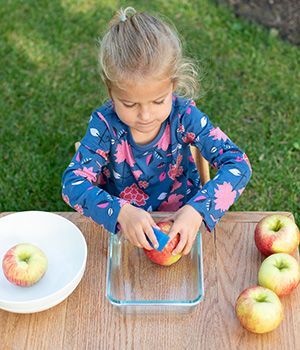
Dry the apples. Once the apples are clean (you can give them a going over in the sink while your child’s back is turned), you can show him how to dry them. Remove the washing tools and place a dry cloth in front of your child’s seat. Again, place the wet apples to the left of him, and an empty basket to the right of him. Show him how you use the dry towel to wipe off one apple at a time and then place the dry apple in the empty basket. Model looking for wet spots before putting the apple aside. Then let him do it. As with all practical life activities, you must not insist on your own way. If he wants to dry one apple and then he is finished, you can finish drying the apples.
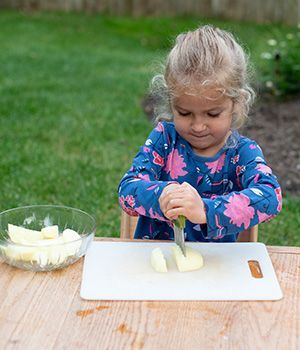
Cut the apples. When the apples are dry and the apple drying materials are put away, you can set up an activity for cutting the apples. This is easily done with a tray that has a cutting board in the center, a bowl on each side, an apple cutter, and a child-appropriate knife (Available at Montessori Services). Place the apple on the center of the tray and show your child how to use the apple cutter to cut the core out of the apple. You can put your hands on top of his as you push down on the cutter. Show him how to pull out the slices one by one and place them in the bowl to the left. Then discard the core. Now, show your child how to choose one apple slice at a time, place horizontally on the cutting board, and use the knife appropriately to cut the apple piece in half. Then put the cut apple pieces in the bowl to the right. Let him work at his own pace through as many apples as he wants, cutting each apple into as many pieces as he sees fit. The beauty of applesauce is that it does not matter! At the end of each apple, he can help you dump the bowl into a slow cooker you have set up on the kitchen counter.
Cook the applesauce. Depending on how many apples your child chooses to cut, you may end up adding some that you have cut yourself on the counter. For six apples, add half a cup of water and half a teaspoon of cinnamon to the cooker. Your child can help pour into the cooker if he is still interested in the activity. Cook on low for about six hours, then mash with a fork or potato masher (another excellent activity for your child if it interests him!) and enjoy.
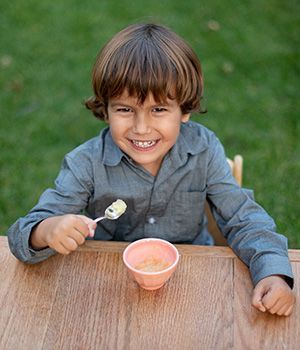
There are many ways to enjoy the unique elements of fall with your family. These apple activities appeal to young children, and also give them a sense of contributing to their home. When you are enjoying your applesauce with your child you can reflect on the memories you made at the orchard and the work you did to create their snack, and you can thank him for his contribution to the family. It is a meaningful experience for a young child!
